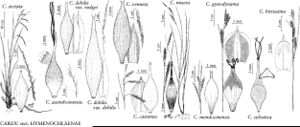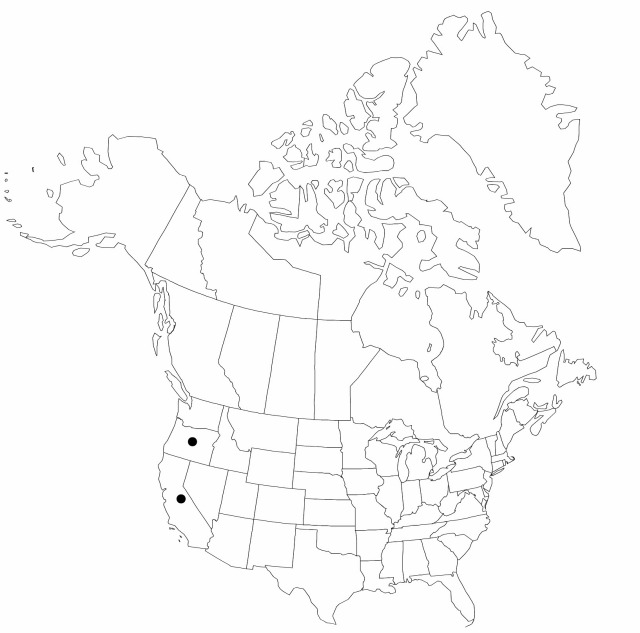Difference between revisions of "Carex gynodynama"
Proc. Amer. Acad. Arts 7: 394. 1868.
FNA>Volume Importer |
FNA>Volume Importer |
||
| Line 24: | Line 24: | ||
|elevation=0–600 m | |elevation=0–600 m | ||
|distribution=Calif.;Oreg. | |distribution=Calif.;Oreg. | ||
| − | |discussion=<p>Sporadic sterile hybrids between Carex gynodynama and C. mendocinensis are well documented. A reported hybrid with C. hendersonii needs further study to confirm parentage.</p> | + | |discussion=<p>Sporadic sterile hybrids between <i>Carex gynodynama</i> and <i>C. mendocinensis</i> are well documented. A reported hybrid with <i>C. hendersonii</i> needs further study to confirm parentage.</p> |
|tables= | |tables= | ||
|references= | |references= | ||
| Line 48: | Line 48: | ||
|publication year=1868 | |publication year=1868 | ||
|special status= | |special status= | ||
| − | |source xml=https://jpend@bitbucket.org/aafc-mbb/fna-data-curation.git/src/ | + | |source xml=https://jpend@bitbucket.org/aafc-mbb/fna-data-curation.git/src/8f726806613d60c220dc4493de13607dd3150896/coarse_grained_fna_xml/V23/V23_865.xml |
|genus=Carex | |genus=Carex | ||
|section=Carex sect. Hymenochlaenae | |section=Carex sect. Hymenochlaenae | ||
Revision as of 16:11, 18 September 2019
Plants densely cespitose. Culms reddish brown to dark maroon at base; flowering stems 20–70 cm, much longer than leaves at maturity, 1–1.7 mm thick, glabrous or sparsely pilose. Leaves: basal sheaths reddish brown, bladeless, pilose; others grading from dark red to green on back, tan-hyaline on front, reddish brown dotted and usually pubescent at apex; blades flat, 3–12 mm wide, usually pilose, more densely so abaxially, margins ciliate. Inflorescences: peduncles of lateral spikes, when present, less than 10 mm, often pubescent; proximal bracts usually shorter than inflorescence; sheaths 5–50 mm; blades 1.2–2 mm wide. Lateral spikes 2–5, 1 per node, usually crowded toward apex and overlapping staminate spike, erect, sessile or pedunculate, pistillate with 20–40 perigynia attached less than 1 mm apart, cylindric, 12–40 × 4–11 mm. Terminal spike staminate, rarely gynecandrous, sessile or very short-pedunculate, 8–30 × 2–5.5 mm. Pistillate scales reddish brown with narrow white-hyaline margins and green midrib, broadly ovate, shorter than mature perigynia, apex obtuse to short-cuspidate, often pubescent on midrib and awn, ciliate distally. Perigynia pale green, blotched with dark maroon at base, dark maroon-brown distally, 2-ribbed and finely veined with to 20 veins, most conspicuous near base, loosely enveloping achene, ellipsoid, 3.7–5.3 × 1–2.2 mm, membranous, base acute, apex narrowing to beak, body covered with long, appressed to spreading hairs; beak bidentate, 1 mm. Achenes substipitate, 2–2.6 × 1.2–1.7 mm. 2n = 50, 52.
Phenology: Fruiting late spring–early summer.
Habitat: Seeps, stream banks, roadside ditches, wet meadows and slopes, coastal prairies, mixed evergreen forest along the Pacific Coast
Elevation: 0–600 m
Discussion
Sporadic sterile hybrids between Carex gynodynama and C. mendocinensis are well documented. A reported hybrid with C. hendersonii needs further study to confirm parentage.
Selected References
None.

